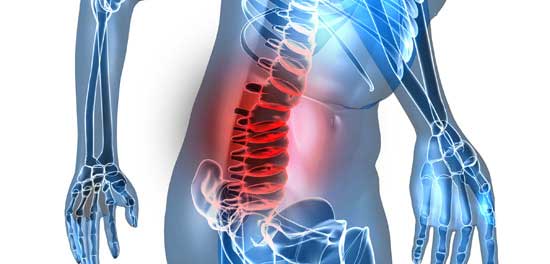
Why Do I Keep Getting Back Spasms?
Warning Signs, Pain, Sources
By Sherwin Nicholson | Updated May 1, 2020
The problem comes first with misinterpreting the warning signs
Please go to the Back Spasms Tips page for immediate help.
Even though everyone suffers from an intense spasm at one point or another, most regard their experience as temporary.
As you wait for the spasm to subside, sometimes with the aid of medication, there are 2 things you may easily believe.
- It was random and had no actual physical reason to happen
- The particular activity we were doing at the time was to blame
In the vast majority of cases, the cause is not the activity involved, but a chronic problem where your body mechanics are failing to meet the demands of the activity.
Aside from serious issues such as disc, nervous, or disease conditions, most intense contractions are related to muscle conditioning. With proper hydration, nutrition, and a reasonable level of activity which does not overextend core muscle groups, you can then begin to treat yourself.
To help you get a clear idea of why, follow this excellent stretch to help stop your spasms.
The Warning Signs In Depth
Before a spasm, we are not consciously thinking about what particular movement we are in the midst of performing. We carry out hundreds of small movements during any given time of the day without paying any attention to our posture, balance, or the strain on our spine, muscles, and joints.
At the height of the contraction, your back, which previously gave little warning of failure will suddenly and intensely hurt while protecting itself from spinal injury. The pain that you feel is not simply an indication of an injury sustained due to the movement you were performing at the time.
It is a warning sign of a deeper and more pervasive problem with your back that is worsened during the movement.
Did you know that tight hip flexors are a warning sign. Learn this important stretch for it!
The Pain Can Keep Us From Getting Help
Usually, experiences from very traumatic events are remembered for a very long time. What we struggle to remember about these events are the details of the circumstances surrounding it, such as what we did to trigger the problem.
In the case of a spasm, we remember how it felt, perhaps where it occurred, when it happened, what were doing, but we tend not to remember why it started in the first place.
This can be difficult because we’re not naturally inclined to analyze every single detail of our actions, let alone physical movements at any given time.
Learn to reach the right way to avoid a sudden back spasm
Learn the Reasons to Avoid the Consequences
The injury is usually due to poor overall conditioning resulting in a lack of protection of our lumbar spine. That area of the lumbar spine sends feedback to the muscles to protect it, by any means necessary. When the muscle surrounding the at-risk area is signaled to contract, it will be intense.
5 Sources of Pain to Look Out For
-
First, it is experienced in the muscle that was not sufficiently protecting the area of concern well. That muscle becomes a source from strain and overall wear.
-
The second source is the muscle recruited to contract to compensate for the failure of the first muscle.
-
The third source is any injury to the area in question which was present even before the spasm. This area would have been aggravated and injured for an extended period before it even occurred.
-
The fourth is from the area of concern as the muscles contract, thereby increasing the pressure on the muscles in that area to maintain stability and restrict movement as much as possible.
-
The fifth source is any other area which is now affected by new muscle imbalances that developed during the episode in the body’s attempt to recruit better support.
Finding an Effective Plan
An effective plan to stop your injury should start with some very effective and simple exercises.
These different sources and reasons can make treatment very difficult. Without a proper plan of conditioning, you might accept this problem. The risks of doing so may lead to another injury that is harder to manage.
Rest and Medication is Not Enough
Long-term relief requires more than rest and anti-inflammatory medication. It requires careful attention to your activities and movements which may be triggering you.
A Common Mistake with Recommendations
In most cases, your family doctor or health professional will provide you a list of recommended exercises and stretches to help you feel better. However, we tend not to follow them because we are left on our own to practice them. We tend to try a few, ignore most but over time, it hurts again. This time we believe that these recommendations were insufficient.
What You Should Do
To avoid this mistake, you should follow a plan that guides you initially from a state of chronic pain and gradually progresses you out of it. This plan should then recondition you so as to help prevent your pain from returning. This site is dedicated to providing its readers a full awareness of what they should both understand and do concerning lower back pain.
“On day one of your plan, I did the first half of stage 1 and my lumbar spine became unlocked for the first time I can remember. For a few hours, I knew what it was like to be pain free. “
For at home treatment see the Pain Relief eBook.
To Download and Use Immediately Order Here
